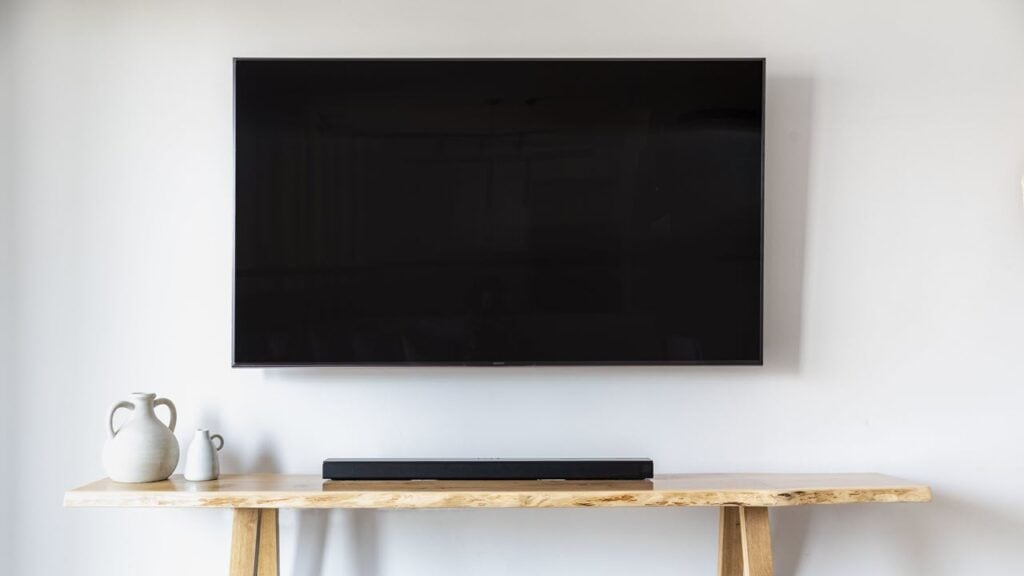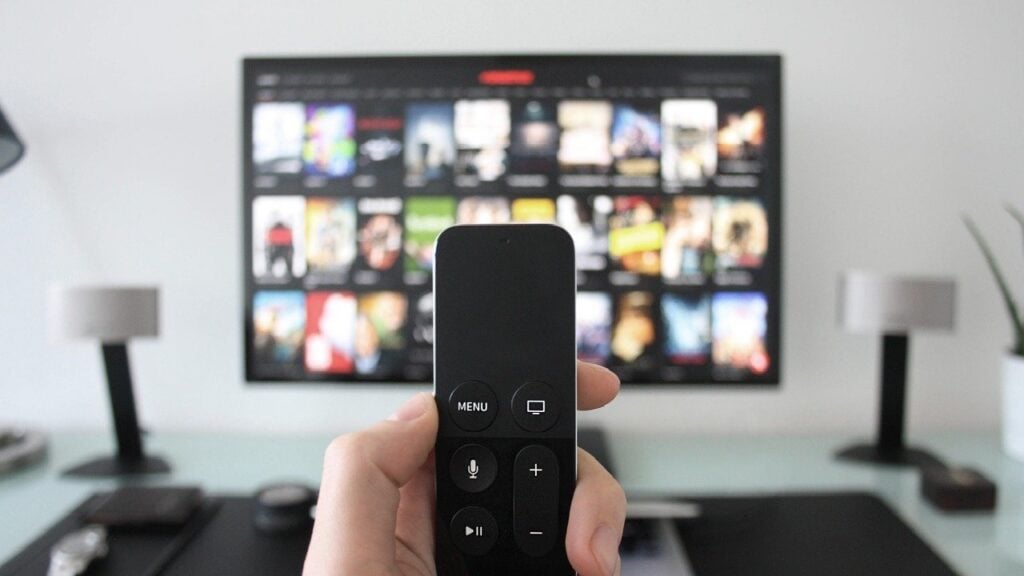A TV brings joy to many, entertainment for all, and background noise for the busy bees. Growing up, you might have relied upon a TV for all your entertainment needs, be it movies, shows, games, or music. Everyone would crowd around a TV and mindlessly lose themselves in the moving pictures, from the oldest to the youngest.
If you are planning on buying a new TV, you might want to know the price, features, the latest models, and any suggestions before making a large investment. So in this article, we will touch upon all the important aspects you should be aware of before buying a TV.
Exploring TVs
If we are heading into the world of televisions, you might want to keep an eye out for a TV that gives you great resolution, has a good size, and comes at an affordable price. Given below are various segments where we are covering the bases you can touch upon before buying a TV:
TV size
TV size is an important debate factor as other factors like the size of the room, the number of viewing audience, and the placement of the TV all depend upon the size of your TV. The larger the TV, for example, a 70-inch TV will fare well for a big family. You should generally buy a TV which can be placed at an appropriate distance from the viewers without seeming too far or straining the eyes by being too close.
Ideally, you want to sit at a distance that allows you to see the whole screen without straining your eyes. There’s a rule of thumb that you should follow while trying to adjust the viewing distance between you and the TV: Multiply the diagonal size of the TV by 1.5 to get the optimal viewing distance in inches. For instance, if you have a 50-inch TV, you should at about 75 inches (50 x 1.5) or 6.25 feet away from it.
Generally, older people or people having some problem with their eyes should take care not to sit too close to the TV as it will affect negatively their already strained eyes.
Take note of all the factors that we have mentioned above and then decide the size of the TV that will suit you. Mind you, this sub-section is only about the size. Read on to know the other bases.
Also read: How much does a PC cost?
TV resolution

TV resolution is another aspect that you should keep in mind while buying a TV. Simply speaking, resolution is the number of pixels that make up the image on the screen. It has a direct bearing on the image quality of the TV screen. In fact, the image quality is directly proportional to the TV resolution.
The most common TV resolutions that you may have heard of are:
- HD (720p)
- Full HD (1080p)
- 4K (2160p)
HD TVs have about one million pixels, Full HD TVs have about two million pixels which is twice that of the HD TVs. On the other end of the spectrum are the 4K TVs with eight million pixels which is four times more pixels than a Full HD TV. Thus, 4K TVs are the best in the market in terms of detail and clarity.
Pixel density of the TV
However, resolution is not the only thing that you need to consider. You should also look for the pixel density, which is measured in pixels per inch (PPI). Pixel density is important because it determines how smooth and realistic the image looks on the screen.
In fact, the smoothness of the edges of the objects is directly proportional to the pixel density, that is, the more the pixel density, the more smooth the edges and the more seamless the viewing experience.
Pixel density depends on both the size and the resolution of the TV. For instance, a 50-inch Full HD TV has a 44 PPI, while a 50-inch 4K TV has a pixel density of about 88 PPI.
In short, you can say that the more the TV resolution more is the pixel density.
You may ask, how does the pixel density or the resolution affect the cost of the TV? Generally speaking, higher resolution and higher pixel density mean a higher cost for the TV as higher resolution and pixel density require more advanced technology, processing power, and a higher bandwidth to deliver high-quality images, thereby putting a bigger hole in your pocket.
So, must you always choose a high-resolution and pixel-density TV? The answer is no. If you sit too far away from the TV, you will not be able to appreciate the difference between an HD or 4K TV. For instance, if you sit more than 10 feet from the TV, you will feel no difference between a Full HD and a 4K TV unless the screen resolution is over 75 inches.
All the above three bases, namely the TV size, resolution and pixel density, are important factors you should consider before buying a TV. All three factors are interrelated, and you should not dismiss either one of them.
TV type

With the advancement in screen technology, TVs are now available in various types depending on the consumer’s taste and budget.
In this subsection, we’ll discuss a few major TV types and their price range so that you can have a complete idea of the subject. Let us start with Light-emitting Diode (LED) TVs.
LED TVs
LED TVs are the most popular and affordable among all the TV types you will see later in this section. They use the backlight of light-emitting diodes to illuminate the LCD panel. The LCD panel then filters the light to generate the image you view on the screen.
LED TVs, apart from being affordable, are also energy efficient. However, they are not without drawbacks. LED TVs have limited viewing angles, lower contrast and, in some cases, backlight bleeding problems.
The price range of an LED TV varies depending on the size, resolution and pixel density. But you can expect the price range to be somewhere between $150 to $400.
OLED TVs
OLED TVs use Organic Light-Emitting Diodes (OLED) to create the images on the screen. Unlike the LED TV, the OLED TV does not need a backlight as each pixel can emit its own light.
This means that the OLED TVs can achieve perfect blacks, infinite contrasts and wide viewing angles, things that the LED TVs lag. Furthermore, you will get faster response times, vibrant colours and that too packed in a thin design.
However, this comes with a cost. The price range of an OLED TV is somewhere between $1,000 to $4,000 for the high-end model.
QLED TVs
QLED TVs are a variation of LED TVs. However, the technology differed vastly. QLED TVs are filled with a layer of quantum dots between the LED panel and the LCD. These tiny particles can emit different light colours depending on their size.
QLED TV use quantum dots to enhance the colour and brightness of the backlight. Thus, the QLED TVs have a more accurate and saturated colour display. You will also get higher brightness and a longer lifespan than OLED TVs.
Regarding the drawbacks, QLED TVs will have the same drawbacks as LED TVs. After all, they are but a variant of LED TVs.
The price range of QLED TVs is more or less similar to OLED TVs, that is, between $500 to $4,000 for flagship models.
MicroLED TVs
These are the newest and the most advanced TV type in the market at present. These TVs use a Microscopic Light-Emitting Diode (MicroLED) to create the images for you to see.
Like the OLED TVs, MicroLED TVs do not need a backlight and here too, each pixel can emit a light of its own.
MicroLED TVs are smaller, brighter and more durable than the OLEDs and other types that we have mentioned above.
Usually, these TVs are not for normal households but for professional services like education, healthcare, and marketing, among others. This also means that you will need to be content with having a much bigger hole in your pocket if you are opting for a MicroLED TV.
MicroLED TV is currently beyond the reach of most consumers and can cost tens or hundreds of thousands of dollars.
Also read: How much does a 3D printer cost?
Extra accessory costs
The above section was dedicated to making you understand the nuances of TV for you to make a better decision while buying a TV.
However, you should understand that you need several accessories and the TV. So, including the accessory cost in your TV budget would be wise.
Wall mount and TV stands
If you plan to mount your TV on a wall or use a TV stand, you may need to purchase these accessories separately.
Again, depending on your TV size and preferred material, it will cost you somewhere between $10 to $100 for a wall mount and a TV stand.
Soundbar

For a more enhanced sound experience, you should consider investing in a soundbar. The soundbar also provides more clarity, bass and volume to have a more immersive TV viewing experience, especially for game nights or parties.
The price range of sound bars varies from $50 to $500 for a more premium version. Additional accessories like speakers along with a soundbar will cost more.
Mobile cables
If you want to connect your mobile or tablet to the TV and mirror its screen, you need to buy a mobile cable. Usually, these are cheaper than the other accessories we have listed here and are easier to find. Just ensure the cables are from a branded company and compatible with the TV.
These are just a few of the accessories that you need. Other accessories include a smart box, Slingbox, and voltage stabiliser. All the costs are included in your TV budget.
Many accessories are not necessary for day-to-day operation. For example, if you have a small room, then there’s no need for a soundbar.
Here’s a tabular representation of the above information detailing the cost of a TV:
| Specification | Price range |
| LED TV | $150 and above |
| OLED TV | $1,000 and above |
| QLED TV | $500 and above |
| MicroLED TV | Price ranges between tens of thousands to hundreds of thousands of dollars |
| Wall mount and TV Stand | $10 to $100 |
| Soundbar | $100 and above |
| Mobile cables | $10 |
Also read: How much does a gaming PC cost?
Frequently answered questions (FAQs)
Let us head to a few FAQs on the topic:
What is the average price of a TV?
It isn’t easy to gauge the average price of a TV without having much information about your brand preference or other bases. However, a normal household can find a good TV in the $200 to $500 price range.
Which TV is best at a low price?
TV companies like Redmi, MI, VW and others offer value-for-money TV. Whatever brand you opt to buy, check the user reviews and then go for the TV.
What is the price of 32 inch LED TV?
You can buy a 32-inch LED TV for about $100.
What is the cost of 50 inch TV?
For a 50-inch LED TV, you will have to spend around $200. Whereas for a 50-inch 4K OLED TV, you must shed around $1,300.
Also read: How high should you mount a TV?






